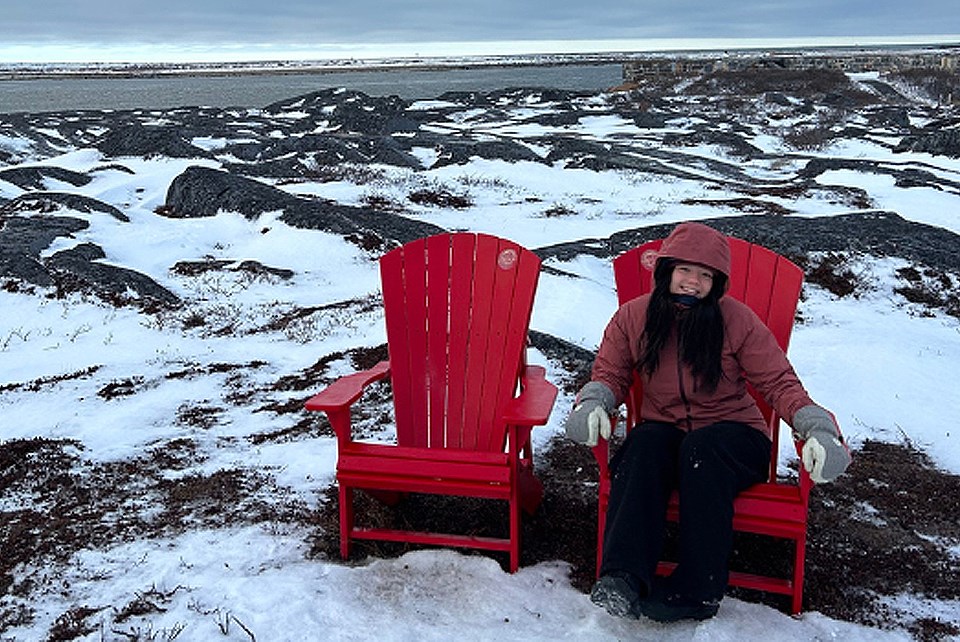CHURCHILL, Man. - November 2024 marked Saskatchewan Polytechnic’s third , where the public and polytechnic come together for education and adventure through a visit to Churchill, Manitoba in search of polar bears. The trip has included students from the School of Agriculture, Natural Resources and Sustainability in previous years, and this year, students had the opportunity to apply for spots on the adventure.
Program head Josh Davidson, who also led this year’s trip, says the students were an excellent fit. “Integrated Resource Management, and Resource and Environmental Law students were a natural choice for an eco-trip when Sask Polytech got the initiative up and running,” says Davidson, “as those programs focus on sustainability, stewardship and conservation. Sending students who plan to work in the tourism industry also makes a lot of sense. I was excited by the success the other programs had and with the support of the dean of the School of Hospitality, Tourism and Applied Aesthetics, decided to make it happen for our students as well.”
Four students were selected to attend this year’s trip with bursary sponsorship, making the trip both financially accessible and a program-endorsed addition to their curriculum learning. Programs selected students based on their written application in combination with academic standing, as well as support from their instructors.
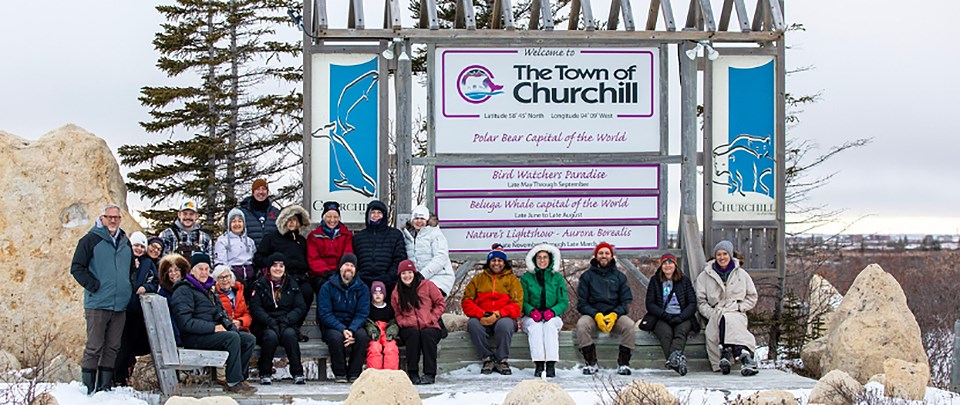
Henry Nguyen and Stephanie Ritchie, the two successful second-year Recreation and Tourism Management applicants, were excited to take what they’ve learned so far and expand on it with a real-life adventure-travel opportunity. Prior to the trip, they joined the other participants for lectures as part of a . During these evening sessions, they learned from subject experts about the geology, history, northern culture and the effects of climate change on Churchill’s ecology—and, of course, about the eponymous bears that are the star attraction of the eco-trip.
The real adventure for everyone who attended, though, began with the van and train expedition to Churchill. The trip takes several days and is a significant part of the experience as participants take the slow, more environmentally friendly route, north. “The highlight of my trip was meeting the people that were on the trip with me,” says Ritchie, who notes that it’s not often that you have the chance to get into conversations with strangers for hours on end. “I got to learn about people’s lives and professions, and everyone was so kind and curious about us students.”
The magic of travel connections continued for Ritchie as the group reached their destination. “While travelling in Europe on my own a few years ago, going through small villages and speaking with locals was my favourite part,” she explains. “On this trip, listening to residents’ stories about growing up in Churchill gave me a feeling of connection.”
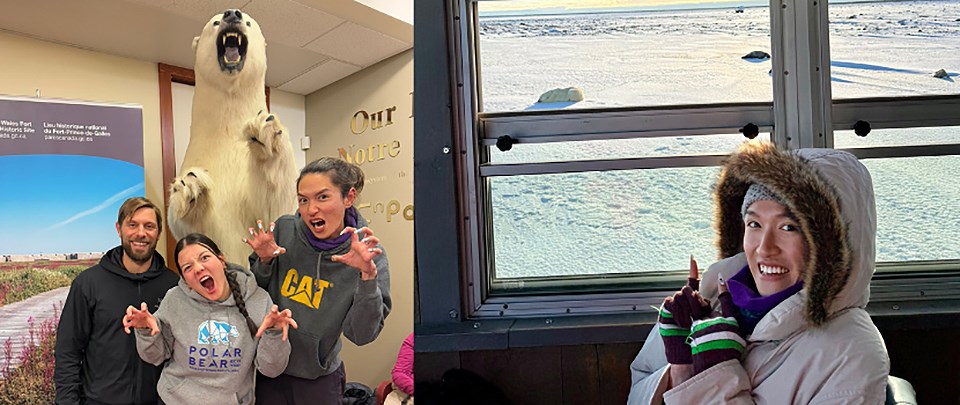
Once in Churchill, trip participants spend several days touring the region and visiting cultural sites, museums and the town itself, and have one full day aboard a Tundra Buggy® to adventure into the Churchill Wildlife Management Area in search of polar bears. “We were fortunate to see many bears,” says Davidson, “as it’s never a guarantee and is partly dependent on the timing of ice formation in Hudson Bay. We had an excellent guide with Frontiers North and saw loads of bears over the eight hours we spent in the buggy. We actually saw polar bears on all three days in Churchill as there were a few spotted on our days in the community. All the participants had many opportunities to view them and take photos and video at close range.”
“Seeing a polar bear approach the viewing vehicle was a deeply emotional moment for me,” says Ngyuen, who is from Vietnam and studying at Sask Polytech as an international student. “I had never imagined experiencing the Arctic cold,” she explains, “or watching these majestic animals in their natural habitat. It was a surreal experience.”

Participants continued their learning during the trip with lectures at the Churchill Northern Studies Centre (CNSC), where they stay, and through guided visits at heritage sites and museums. Nguyen reflects that the presentations at CNSC and visit to the Itsanitaq Museum highlighted for her the importance of integrating Indigenous knowledge into tourism. “Georgina Berg’s session emphasized respecting the land and wildlife, teaching us about traditional practices such as using every part of a hunted animal to minimize waste,” she says. “And the Inuit tools we saw at the museum demonstrated sustainable living practices perfected over generations.”
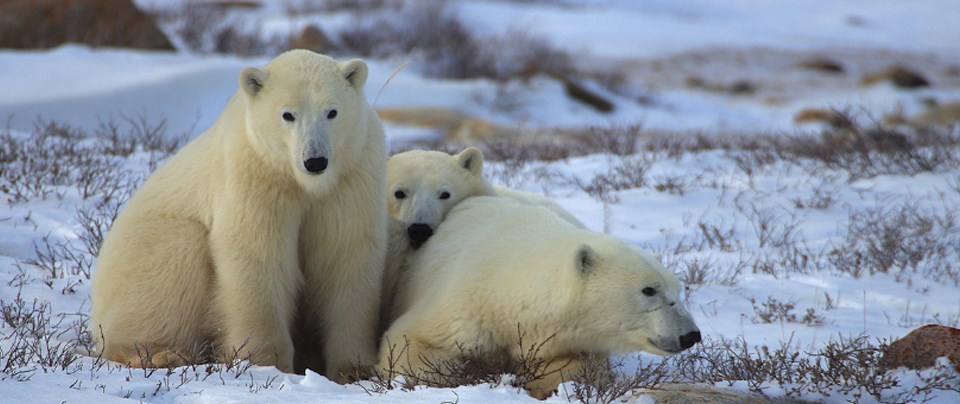
Nguyen notes that these experiences have inspired her to incorporate similar community-based tourism initiatives in her future projects, such as creating platforms for Indigenous artisans to share their crafts and stories, explaining, “The lessons learned reinforced the idea that tourism should empower local communities while preserving cultural heritage.”
Ritchie also connected lessons from the trip to what she is learning in her program. “One of the unexpected things I learned was about a mural project,” she notes. “There was a 铿俹od back in 2017 that washed out the rail tracks, leaving the community feeling isolated and forgotten. Artists around the world volunteered to bring back liveliness to the community by creating stunning murals around Churchill. I’m currently taking a community development class and projects like this create community belonging and bring people together.”
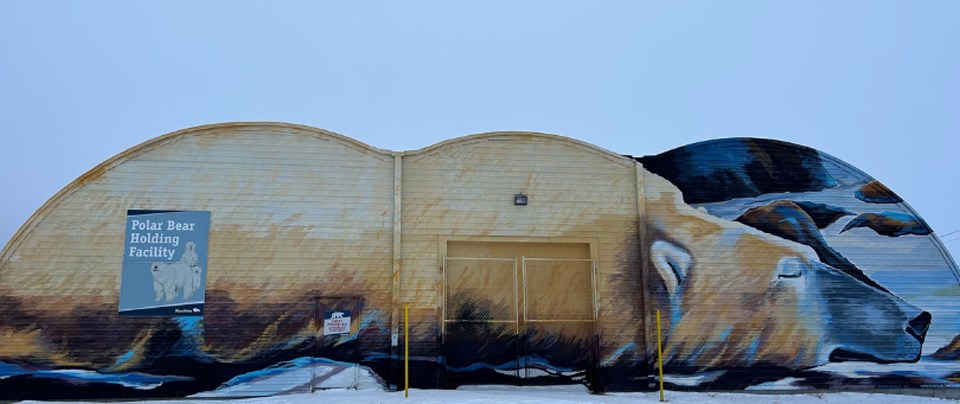
Experiencing a tour operation from the inside was an added benefit to the two students, whose studies are preparing them to work in the field when they graduate. “I truly believe that hands-on experiences help students learn best,” says Ritchie. “We got to see firsthand how unexpected changes arising from the adventurous nature of the trip were handled, for example. The most important thing I will take away from this experience is that no matter what age you are, everything is still so exciting the 铿乺st time. We had participants from seven years old to retirees. Everyone was excited and in awe of the experience.”
For Nguyen the trip made her keenly aware of the impact sustainable tourism can have. “Being in an Arctic ecosystem and seeing the challenges these animals face due to climate change reinforced my passion for advocating for sustainable tourism and preserving the wonders of the world for future generations,” she says. “The CNSC embodies sustainability by implementing eco-friendly infrastructure and practices. Seeing this in person reinforced my belief in creating tourism models that preserve natural beauty without exploitation.”
“This whole experience helped me grow as a student,” says Ritchie, who now feels more confident in her career choice. As a student it’s sometimes hard to know what you want to do after graduation without having hands-on experience and a sneak peek at career possibilities. A career is really about putting together all of the things you have experienced in life!”
Visit our website to learn more about Saskatchewan Polytechnic’s and the program.
